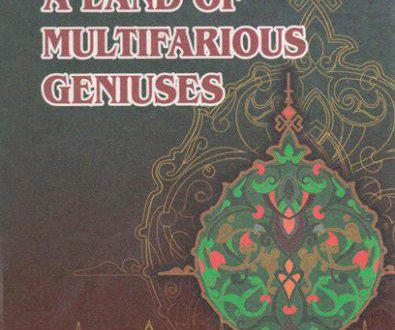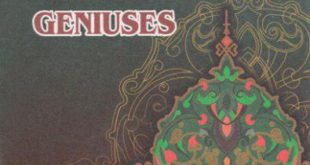An encyclopaedic scholar of the Middle Ages Abu Hafs an Nasafi was actively engaged in different branches of science. The number of the scientific works he created exceeds a hundred. As “Al-aqaid” written by him is well known in the Islamic world, th interest to this work in Europe grew very early. In the first half of the 19th century, a European investigator V. Kureton wrote his monographic research titled as “A foothold of the Sunni religious teachings”. After that publication, the interest to the works of this productive scholar grew lesser. Some articles about Abu Hafs an-Nasafi appeared in the Islamic encyclopaedias and periodicals. However, these publications were rather limited with the information only about the life and scientific career of the scholar. Even today not a single special investigation is carried on the scientific heritage of our countryman.
The full name of the scholar was Najmu-d-din Abu Hafs Umar ibn Muhammad ibn’Ahmad ibn Ismail ibn Muhammad ibn Ali ibn Luqman an-Nasafi summa as-Samarqandi al-Hafiz al-Faqih az-Zahid al-Hanafi. Sometimes his name may also be seen as an-Nakhshabi. As he was born in Nasaf and later lived in Samarkand, he is treated as “An-Nasafi summa as-Samarqandi”. In the world of science, the scholar was known as Abu Hafs an-Nasafi.
More than 20 sources inform us about the life and scientific career of Abu Hafs an-Nasafi. The first and the earliest information about the life and scientific career of Abu Hafs an-Nasafi was provided by his contemporary colleague Abu Sa’d Abdulkarim ibn Muhammad as-Sam’ani al-Marvazi (died in 1167). Abu Sa’ad as-Sam’ani mentioned Abu Hafs an-Nasafi’s name in his book “Kitab al-ansab” in 27 cases. The authors of the later period also mention
An-Nasafi’s name but they mainly use the information given by as-Sam’ani adding sometimes little information of their own. These additions mainly deal with the works written by an-Nasafi and his viewpoints on the scientific questions under discussion. Being a representative of the Shafi’iya order Abu Sa’d as-Sam’ani stresses that Abu Hafs an-Nasafi was one of the acknowledged scholars of his time and at the same time he criticizes an-Nasafi in making mistakes in defining and describing the essence of some Hadiths. I hough he had never met an-Nasafi in his lifetime, he prided himself on having a written permission from him to deal with his works. As-Sam’ani concludes his opinion on Abu Hafs an-Nasafi with the following lines: “He was one of the lovers of Hadiths but he did not have the possibility of understanding their essence (falam yurzaq lahmahu)”.
There is some indefiniteness in defining an-Nasafi’s date of birth because in the historical sources there is no definite indication on this matter. In the researches done on an-Nasafi’s life and scientific career, he is supposed to have been born in 461 or 462 A.H. In accord with the Christian calendar, it coincides with 1068-70. Most of the sources mention supposedly 1068.
During his lifetime, Nasaf was one of the centres of science and education and most flourishing cities of Maveraunnahr after Samarkand and Bukhara. At this time, lots of scholars and estimated sclents grew in this city. For instance, in accord with the information 1’iovided in the books “Kitab al-qand” and “Kitab al-ansab”, during die 8th-12th centuries there were more than 3000 estimated holars representing different branches of the Islamic sciences who ‘.ved and created in the territory of Maveraunnahr. A thousand of diem were from Samarkand,about 600 of them were from Bukhara d approximately 400 of them are considered to have lived and ated in Nasaf. Among the rest of the 1000 scholars 70 people are from Shash (Tashkent) more than 60 of them were from Fergana, the same number of scholars were from Kesh, more than 50 of them were from Termez, more than 40 of them were from Khoresm and other areas of the country such as Dabusia, Usrushana, Kushonia, etc. The provided figures prove Nasaf’s role and its importance in science and education in Maveraunnahr.
Abu Hafs an-Nasafi took the primary education in his native town Nasaf. He mentions Hafiz Abu Raja Qutayba ibn Muhammad al-Usmani an-Nasafi (died in 1081) as his first teacher in studying and learning the Hadiths, who was the grandson of a well-known scholar of his time Abu-l-Abbas al-Mustaghfiri. At the time when Abu Raja used to deliver lessons on Hadiths in the mosque “Bab Maqsura”, a young student Abu Hafs an-Nasafi began to take notes on the essence of Hadiths delivered and explained by his teacher Abu Raja Qutayba.
Another teacher who delivered lessons for Abu Hafs an-Nasa on morality was a writer and lawyer Abu-l-Hasan Ali ibn Muham mad an-Nasafi al-Kasbavi (died in 1092). In his books “Kitab a qand” and “Muntakhab” Abu Hafs an-Nasafi mentions the biogr phies of 26 of his teachers and masters who taught him in his earl period of education. 18 of them were from Samarkand, and this fa shows that having had his early education in Nasaf, Abu Hafs came to Samarkand to continue his education. Among Abu Hafs an-Nasafi teachers and masters, the following names should be rightfully men tioned:
- Abu Ali al-Hasan ibn Abd al-Malik an-Nasafi;
- Al-Imam al-fadil Muhammad ibn Ahmad al-Maymarghi an Nasafi (11th century);
- Abu Muhammad Ismail ibn Muhammad an-Nuhi an-Nasa (died in 1089).
Among them the representatives of the an-Nuhi dynasty serves a special attention and appreciation.
 Imom Buxoriy xalqaro ilmiy-tadqiqot markazi bukhari.uz
Imom Buxoriy xalqaro ilmiy-tadqiqot markazi bukhari.uz










